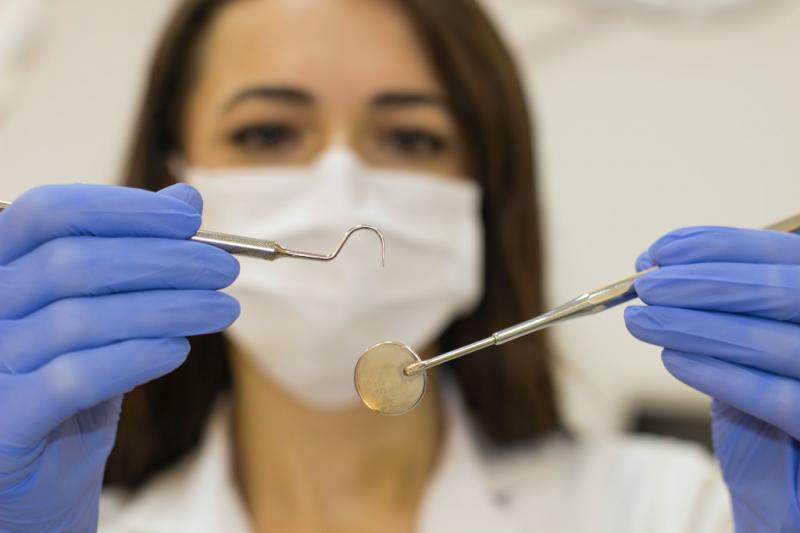How Do Dentists Remove Tartar

Nothing can get rid of stubborn tartar buildup as dentists can. Once tartar has developed, you can't reverse it yourself once it's already there. The only way to remove tartar is by having a dental cleaning done through your local dental clinic.
Yet, how does a dentist go about removing tartar? What makes removing it so hard that only a dentist can get rid of it?
Find out for yourself and learn how dentists remove tartar from your teeth so you're prepared the next time you have a dental cleaning appointment!
What is Plaque & Tartar?
You may notice that tartar and plaque are used interchangeably to define one another. There is certainly overlap between the two terms, but they differ regarding stages of buildup. You can best understand what tartar is by first knowing what plaque is.
Have you ever gone a day or two without brushing? If so, you may have noticed a sticky substance along your gumline and teeth beginning to appear. That's generally the tell-tale sign of plaque.
It's made from a mixture of saliva and leftover food particles in your mouth filled with potentially harmful bacteria. When plaque is left unchecked from improper oral hygiene, you can expect it to build up so much that it eventually hardens and becomes tartar.
Typically, tartar develops along the outside of your teeth and below the gumline. The accumulating tartar deposits can look yellow or brown when it settles in between your teeth. It makes it even more difficult to get rid of since it's in a tricky area to clean with only brushing and won't do much when the plaque has hardened into tartar.
In essence, tartar results from accumulated plaque that ends up hardening.
What Are the Effects of Tartar?
As established, hardened plaque ends up turning into tartar. Yet, what's the issue with that? Well, since the components of tartar stem from old food particles and possible bacteria, it can pose various problems for oral health.
Here is a few dental problems that can occur from tartar:
- Bad breath
- Ruin enamel (i.e. lead to tooth sensitivity, cavities, and even tooth loss)
- Contribute to gum disease
It may seem too late to prevent tartar once it's already there, but you can certainly start fresh once you pay the dentist a visit to help remove tartar from your teeth.
How is Tartar Removed?
The first step to getting tartar removed is to make an appointment with your dentist for a dental cleaning and exam. During the cleaning process, there is a stage dedicated to removing all the tartar buildup that has formed.
A dentist or a dental hygienist will typically be able to remove the tartar by using a tool with a hooked end called a hand-held scaler. The scaler helps to scrape away any excess tartar in your mouth. If the tartar buildup has resulted in gum disease, the dentist will opt to do a deep cleaning that requires scaling and root planing.
This deep clean involves getting the roots of teeth e smoothed to help encourage reattachment of the gum to the tooth. Sometimes, it can mean using a laser to kill off bacteria deep within a gum pocket completely.
How to Prevent Tartar?
Did you know plaque can harden into tartar in a few hours? It's incredibly quick! That's why brushing and flossing daily and properly is important.
Here are a few things to consider to elevate your oral hygiene routine:
- Brushing for two minutes at a time
- Use a soft-bristled brush
- Brushing teeth and gums at an angle to get hard-to-reach plaque
However, there are various ways you can help prevent tartar buildup beyond a consistent oral routine.
Additional Oral Care
For some, it means adding more to their oral routine to help prevent tartar. It can be simple as switching up your toothpaste for one targeting tartar control or baking soda toothpaste. Avoid charcoal toothpaste since it does not affect combating tartar.
Beyond whitening strips helping to brighten your smile, they've been proven to reduce tartar by 29% through consistent use for three months. It goes beyond your typical oral routine to prevent tartar from forming. Another handy addition is using a water flosser since it pulses water into the spaces between teeth to remove bacteria and debris, which can be more effective than flossing if done consistently.
Not only does mouthwash help keep bad breath at bay, but it also helps to kill any of the bacteria that can promote tartar from building up. Mouthwash isn't a substitute for brushing and flossing, so ensure you're brushing and flossing along with using mouthwash.
Tartar-Fighting Diet
Interestingly enough, green tea has been said to help reduce bacteria in your mouth. In turn, it helps to decrease your chances of tartar formation. Furthermore, eating more fresh fruits and vegetables can help as well. Since these require more chewing, it results in more saliva production that can help wash away tartar-promoting bacteria. In addition, even chewing sugar-free gum can help, too, since it has a similar effect on saliva production!
Tartar is preventable. Yet, sometimes it's just unavoidable and needs to be properly removed through a dentist. From their expertise and proper equipment, they can safely remove all tartar buildup and help keep your oral health optimal!
More to Read:
Previous Posts:





